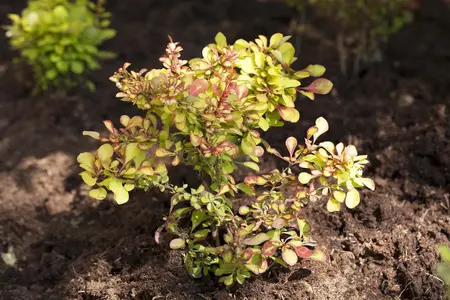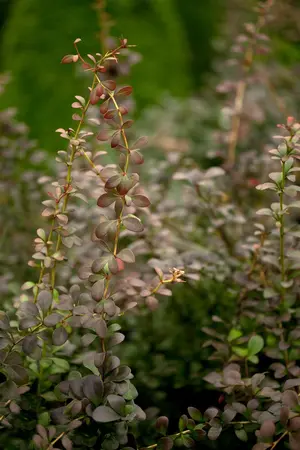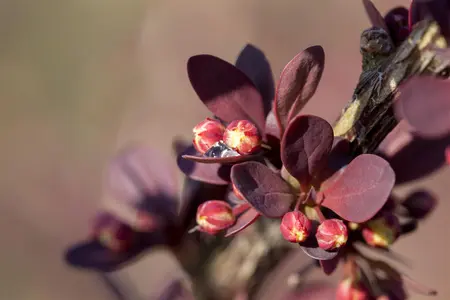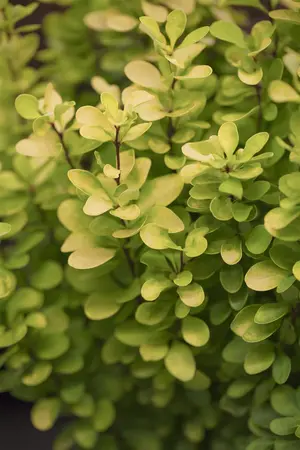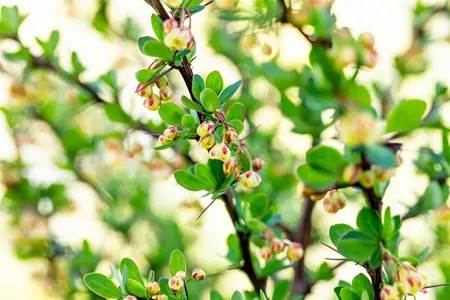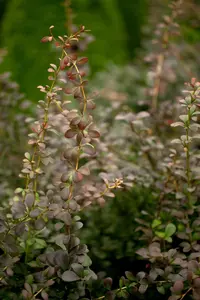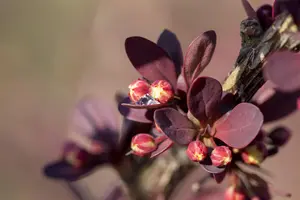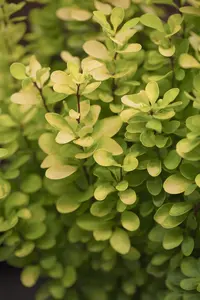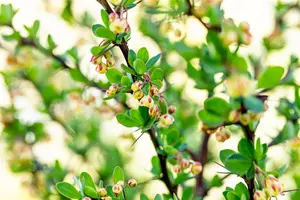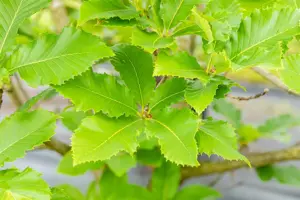Berberis thunbergii - 30-40 CM C7.5
Berberis thunbergii - 30-40 CM C7.5
Description
The Japanese barberry (Berberis thunbergii) is a dense, overhanging, branched shrub with decorative, coral-red fruits that stay on for a very long time. It produces yellow flowers in May. The Japanese barberry also has egg-shaped, medium green leaves. In a sunny to semi-shady location with well-drained, humus-rich, acidic soil, it usually reaches a height of around 3 metres and grows to a width of around 3 metres.
Bulletpoints
* Fruiting ornamental
* Suitable for flowering hedges
* the blossoms are highly favoured by bees, bumblebees and hoverflies
* attractive scarlet autumn colouring
* tolerates pruning
* easy to care for
* drought-resistant, resistant to urban climates, wind-resistant, deer-resistant
leaves
The deciduous leaves of the Japanese barberry are medium green, ovate and alternate. They are about 3 - 4 cm in size. Japanese barberry turns a bright scarlet red in autumn.
Bark
Red-brown bark makes this plant an eye-catcher in any garden.
Spread
China to Japan.
Frost hardiness
The Japanese barberry has good frost hardiness.
Growth
Japanese barberry is a dense, overhanging and branching shrub. It usually reaches a height of 2 - 3 m and is approx. 2 - 3 m wide.
Water
The plant has a medium water requirement.
Pruning
This plant is tolerant of pruning.
Location
Preferred location in a sunny to semi-shady position.
Soil
Berberis thunbergii thrives on all acidic, humus-rich and sufficiently moist soils.
Planting time
Container plants can be planted all year round, except when the soil is frozen and in summer heat (over 30°C).
Tasks
- Mulching: In the period from March to April.
Care
A slow-release fertiliser can be used in spring. This releases the nutrients slowly and continuously so that the plant is evenly supplied over a longer period of time.
Flower
The yellow flowers appear in May.
Fruit
The coral-red fruits of Berberis thunbergii are particularly decorative. These appear from September. Sticks for a very long time.
Worth knowing
Plant or parts of the plant are poisonous.
Use
Ornamental shrub, bee pasture, hedge
Shoots
The shoots of Berberis thunbergii are spiny.
Root
Berberis thunbergii is a shallow-rooting plant and, depending on the soil, forms densely branched roots.
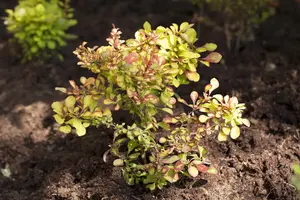
- Article number400
-
EAN codeBETHUNBE-2030040C75
- Latin nameBerberis thunbergii
- catalogLandscape shop

